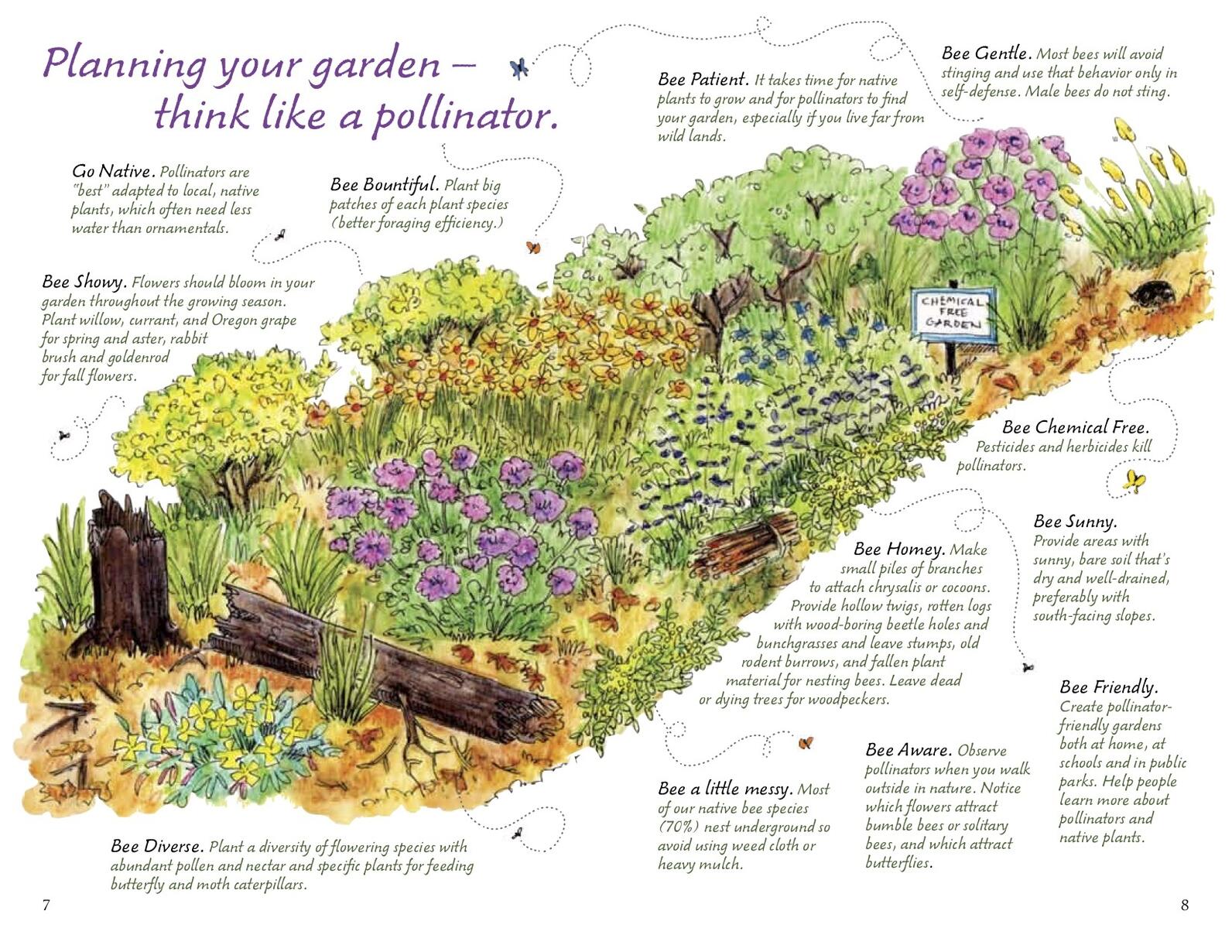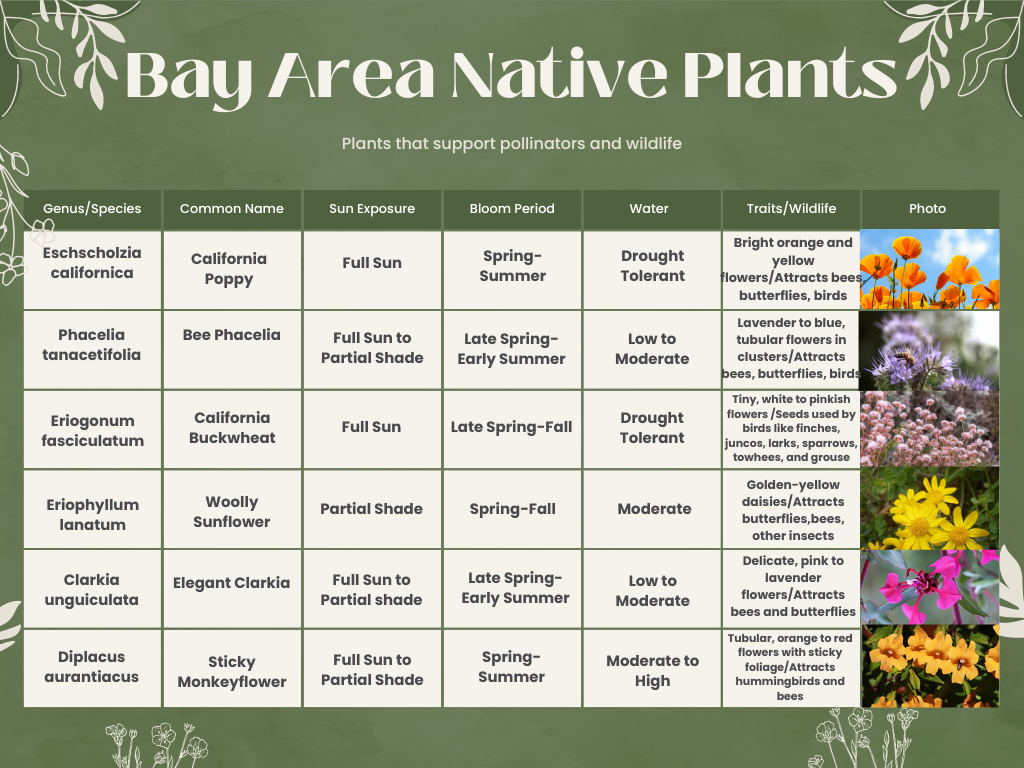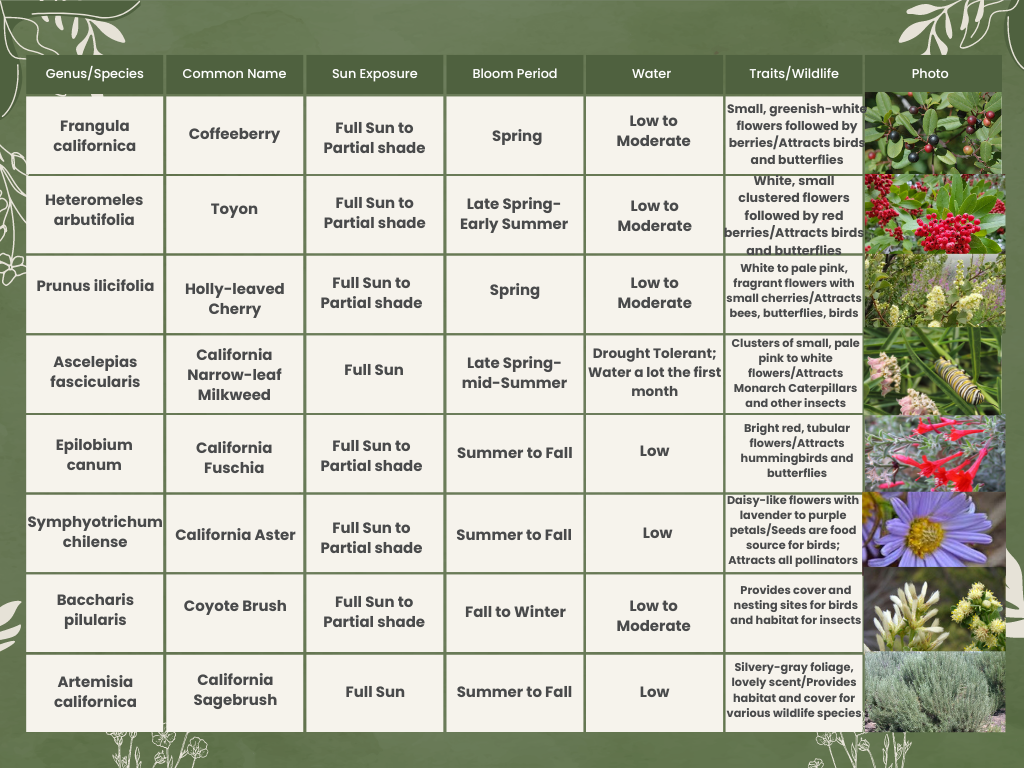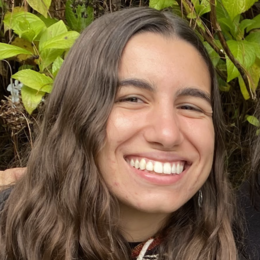Moving to Richardson Bay, my favorite season is undoubtedly spring. With the vibrant, almost neon green grasses, the towering yellow and purple lupines, the sunset orange blooms of California poppy, and even the maple syrup scent of cudweed, I cannot help but smile as I walk through our Center’s pollinator garden. And, of course, with these sweet fragrances and striking colors comes the lulling buzz and fluttering wings of our greatest pollinators. These pollinators like bees, butterflies, and birds play a crucial role in maintaining biodiversity, the rich tapestry of life on earth, all the while supporting food production and enhancing ecosystem health. By creating pollinator-friendly habitats, we can ensure a thriving ecosystem, sustainable agriculture, and a healthier planet for future generations.
Why Native Plants?
For thousands of years, pollinators have coevolved with native plants, which are best adapted to the local growing season, climate, and soils. Most pollinators feed on specific plant species—hummingbirds sip nectar from long, tubular California fuchsias, while green sweat bees prefer more open-faced sunflowers. Non-native plants may not provide pollinators with enough nutritious nectar or pollen or may be inedible to butterfly or moth caterpillars. Bumblebees and other pollinators are also known as keystone species as they help sustain the whole environment; their presence influences the abundance, diversity, and functioning of all other organisms in the ecosystem, and their decline can lead to drastic changes.
Many native plants and animals depend on pollinators for their growth and survival. For example, the California fuchsia has co-evolved with hummingbirds to thrive. Their tubular shape is well-suited to the long, slender bills of hummingbirds, and the vivid red and orange color of California fuchsia flowers is specifically attractive to hummingbirds, as these colors signal a high nectar reward. Hummingbirds have excellent color vision, and they are drawn to these vibrant blooms. What is fascinating is that the blooming season of California fuchsia coincides perfectly with the fall migration of hummingbirds. As we can see, many native plants and wildlife work together in symbiosis—their interactions have evolved to be mutually beneficial. The nectar-rich flowers serve as a crucial energy source for these migratory birds, helping them refuel for their journey, while the California fuchsia benefits from effective pollination.
Similarly, Narrow-leaf milkweed helps enhance the entire ecosystem as they are the primary host plant for monarch caterpillar larvae. As caterpillars feed on the leaves, the flowers provide nectar for bees and butterflies and bring in ladybugs and other key snacks for our local birds! Fun Fact: the toxins present in milkweed make monarch caterpillars unpalatable to predators, forming a protective shield even as the caterpillars transform into butterflies!
Starting Your Wildlife-Friendly Garden

Source: Attracting Pollinators to Your Garden Using Native Plants, www.fs.usda.gov/wildflowers/pollinators/documents/AttractingPollinatorsV.... Accessed 12 April 2024.
- Assessing Your Space: observe where you want to garden and determine its size, sunlight exposure, soil type, and existing plants.
- Choosing Native Plants: select native plants that are adapted to your area’s climate and soil conditions; it helps to choose a variety of plants with different bloom times to support wildlife throughout the seasons.
- Watering: encouraging birds and other pollinators can look like simply setting up a shallow dish or small birdbath with water for drinking and bathing.
- Getting Creative with Habitat Features: incorporate bird feeders, bird baths, and nesting boxes to attract/support wildlife. This could also look like including elements like rocks, logs, and brush piles to provide hiding places and shelter.
- Avoiding Pesticides: chemicals like pesticides, herbicides, and synthetic fertilizers can harm wildlife and run into our local waterways. Practice using organic fertilizers or make use of compost!
- Aiming for Diversity: select plants from a wide range of species, including trees, shrubs, flowers, and grasses. For example, nurse plants, such as coyote brush and coastal sagebrush, make for vital hiding spots and shade for many birds and other wildlife. And, sun-loving shrubs like manzanitas and ceanothus can help bring in vibrant colors and sweet nectar for pollinators!









